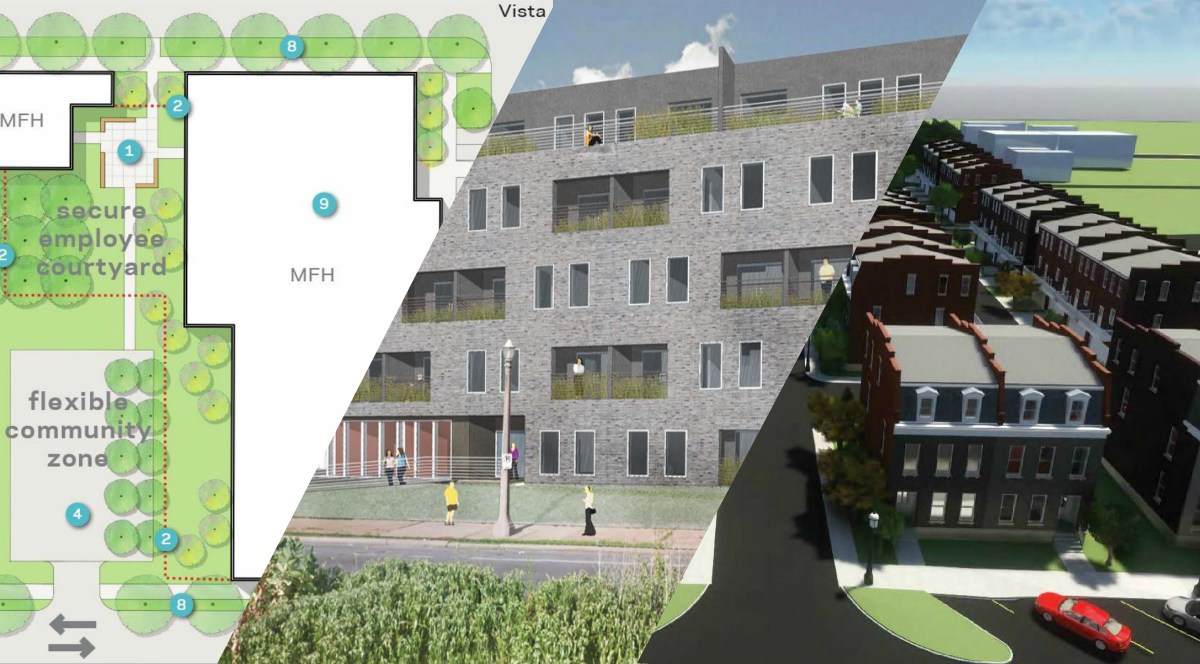Yesterday, the City of St. Louis Preservation Board had a good day. The decisions of that board, informed by recommendations from the city’s Cultural Resources Office, are generally quite straightforward, mostly unexciting. There are a lot of denials of generic Home Depot doors in Local Historic Districts, and things of that sort.
The board’s role is constrained. It can’t require better urbanism, but absent a city-wide housing and development policy, the Preservation Board takes on part of the city-building role. The board takes public testimony, is presented plans by developers, and adjudicates the future of a building or development, and in this way, our city.
So what did the Preservation Board do yesterday? It gave preliminary approval to the big infill project at the long-vacant Praxair site in Lafayette Square. A first hearing was greeting largely by people in opposition. This time, neighborhood residents in favor of the plan spoke up.
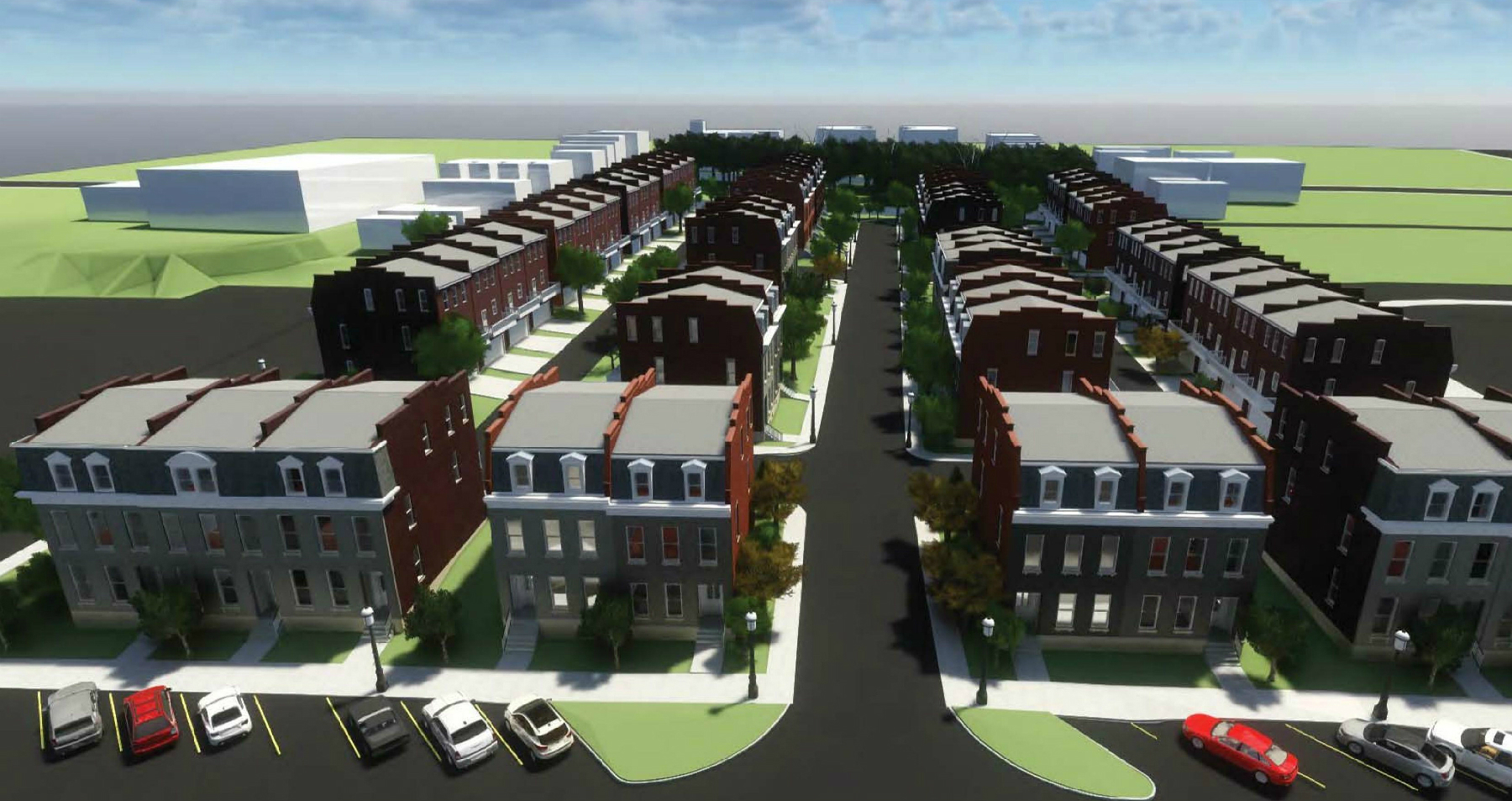
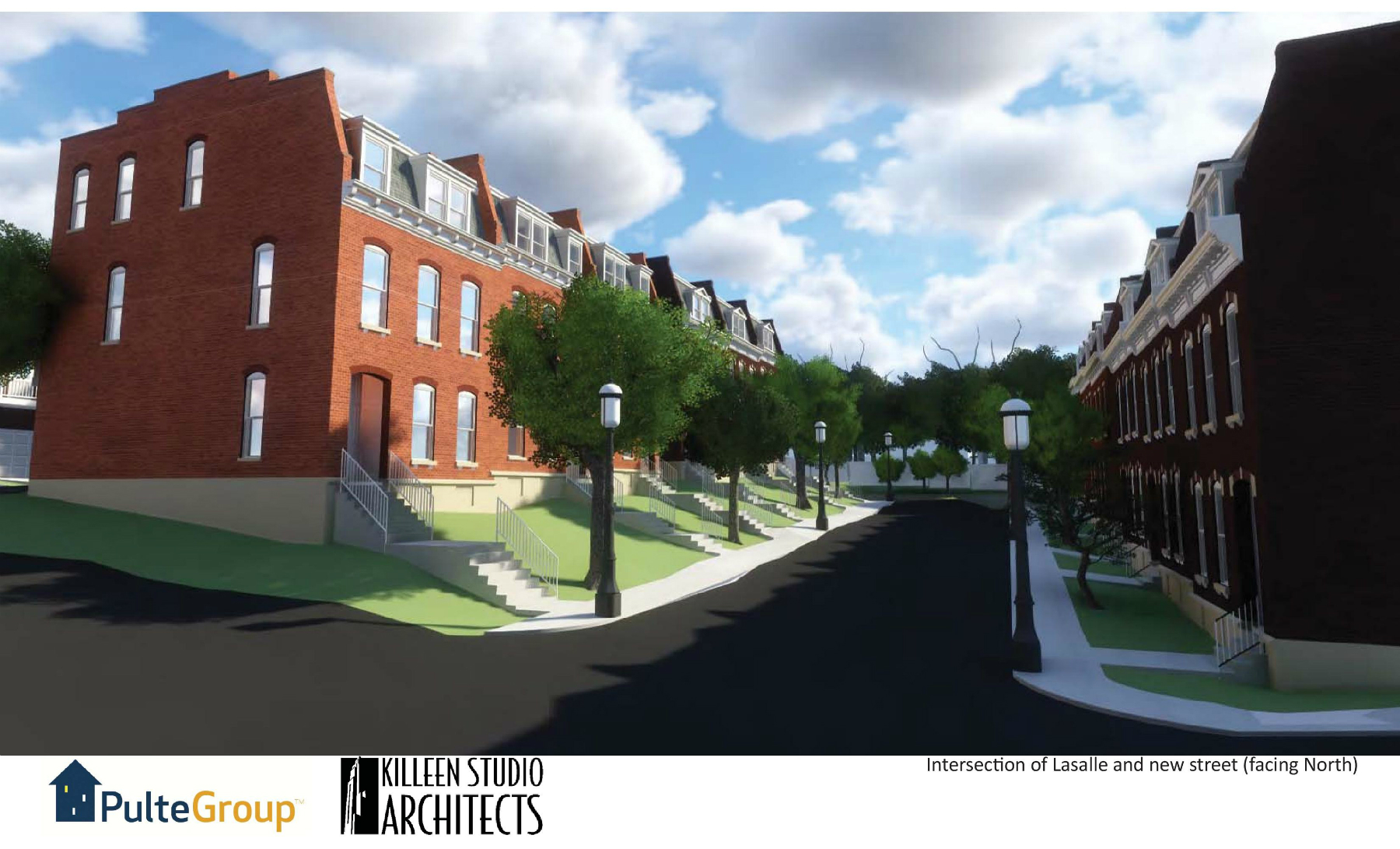
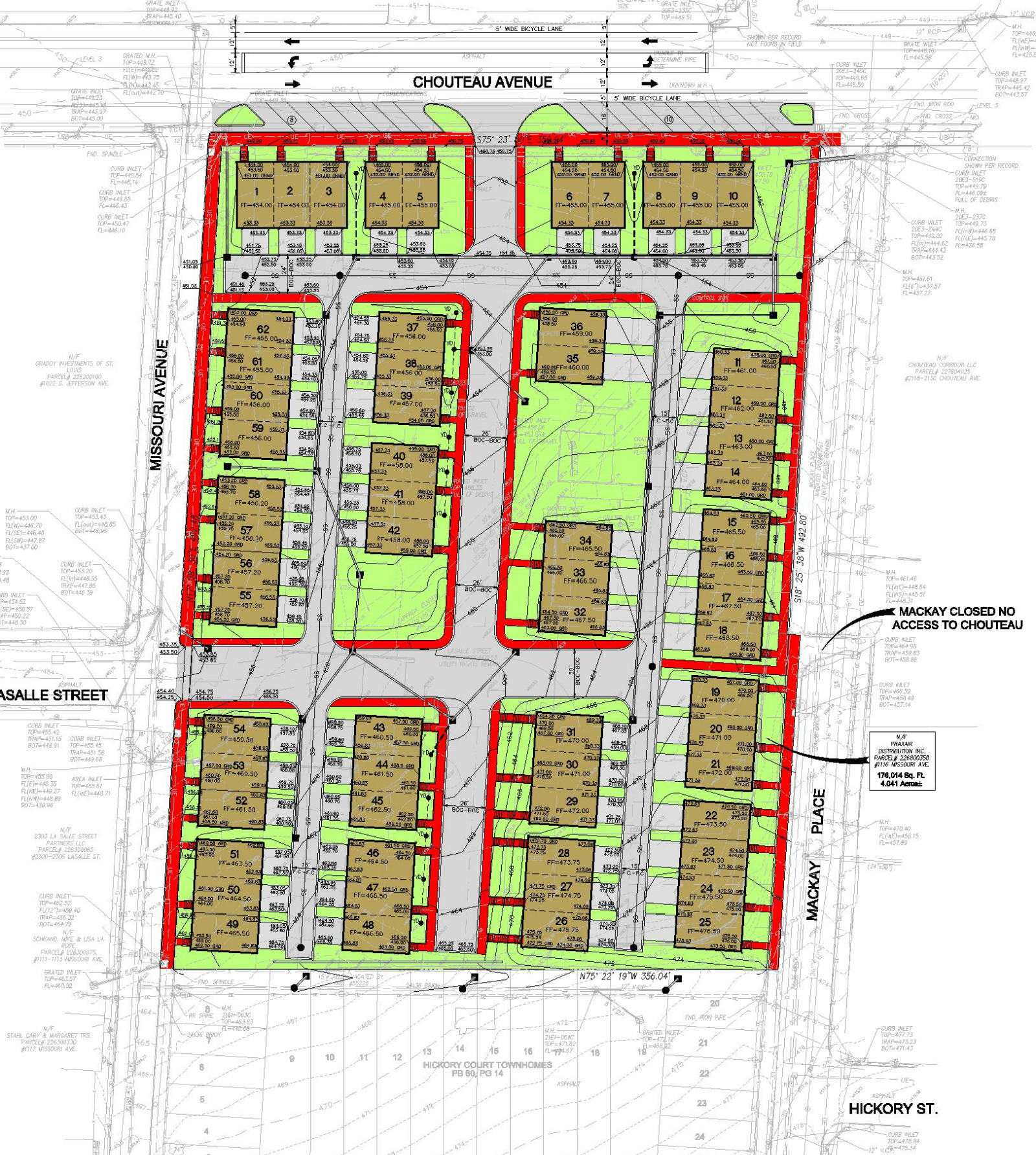
The approval comes with some caveats, that the townhomes be fully wrapped in a brick veneer, that sidewalks be added to LaSalle Street as it extends into the development, and that units facing Chouteau Avenue be re-presented with design changes. Such caveats are quite common in board decisions.
The townhomes by Pulte Homes and Killeen Studio Architects aren’t perfect. Better design is hampered by the Local Historic District, for better or worse. For an industrial site on the edge of the Lafayette Square neighborhood, more should have been allowed by code. The focus should have been better urbanism and less an aesthetic pursuit. Such is the changing nature of urban historic preservation.
Assuming the project moves forward, it represents what more-fancy urban planners call “gentle density” or “density done well”. In St. Louis too many people think of it as scary density. That vacant industrial lot that exploded a decade ago? It didn’t create any traffic, no noise…you get the idea.But townhome development is very significantly more sustainable, produces a much greater return to the city, than single-family homes.
But townhome development is very significantly more sustainable, produces a much greater return to the city, than single-family homes, even the big historic ones in Lafayette Square. It’s a balancing act to be sure, but when and where townhomes can be developed in a thoughtful, urban manner, the city (and residents) should offer support.
Read more: Changes Present Better Urban Design for Lafayette Square Praxair Site
____________________________
What else did the board do? It denied a request by the Missouri Foundation for Health. Its mission reads, “to improve the health and well-being of individuals and communities most in need.” It hired architectural behemoth HOK to repurposed the Columbia Iron Works site in Forest Park Southeast.
MFA requested approval to demolish a residential building at 1408-1410 Tower Grove Avenue. The structure is a merit building in a National Register district and found to be in sound condition. The demolition would have made way for a “secure employee courtyard”. It’s unclear how removing a four-unit affordable apartment building in a quickly changing central neighborhood improves the health and well-being of individuals and communities most in need.”


Even with HOK’s inventive euphemistic “flexible community zone” to label a parking lot, the project failed to win the support of the Park Central Development Corporation’s development committee. Despite this, the Cultural Resources Office surprisingly endorsed the demolition, with some creative reasoning: “The proposal by the Missouri Foundation for Health to rehabilitate the Columbia Iron Works Facility exceeds the value of the preservation of the four-family structure, which is incompatible with the proposed development for the Foundation.”
Having read Preservation Board agendas for more than a decade, I’ve never seen such reasoning, which I read as giving the go-ahead for demolition to any developer wanting to develop a different use for a sound merit building in National Register District. Basically, the justification is simply that the developer doesn’t want the building. It’s that silly.
Still, with the board could have simply endorsed the CRO recommendation over the objection of the neighborhood development corporation. Often times the ward alderman will weigh in publicly, or quietly on such issues. It’s unclear whether the Roddy campaign sign at 1408-1410 Tower Grove represents an endorsement for demo or a plea for help.
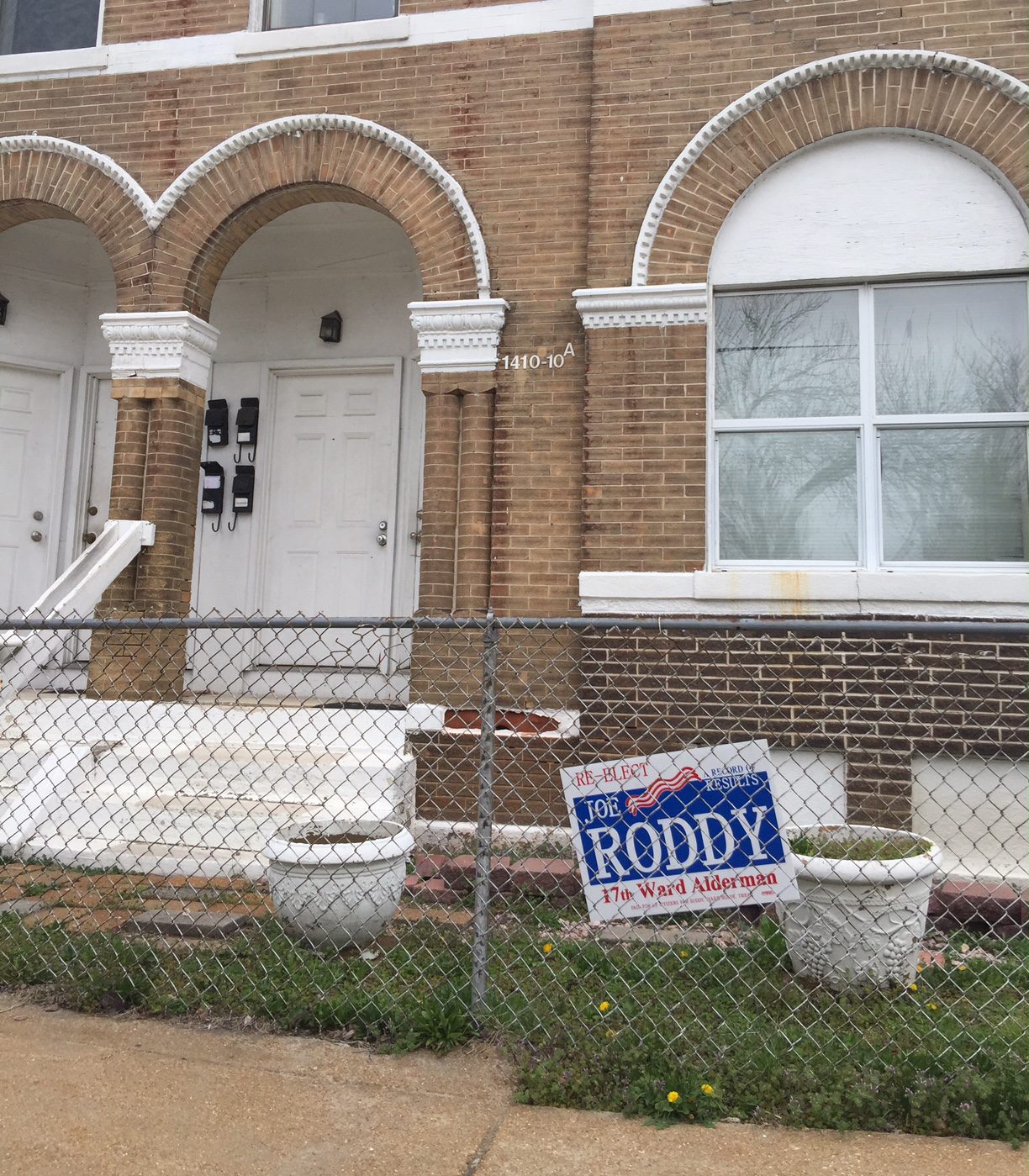
Read more: Missouri Foundation for Health Plans New Home at Columbia Iron Works in The Grove
____________________________
Bonus smart decision – the Preservation Board gave preliminary approval to the HOK-designed apartment building for the South Grand Y site:
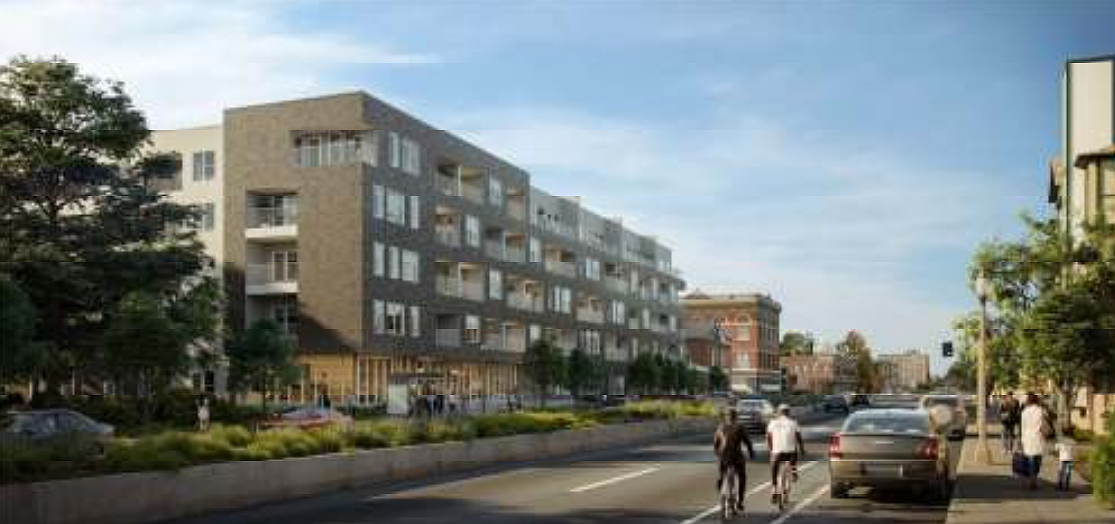
Read more: Contemporary 116-Unit Apartment Building Planned for South Grand YMCA Site
